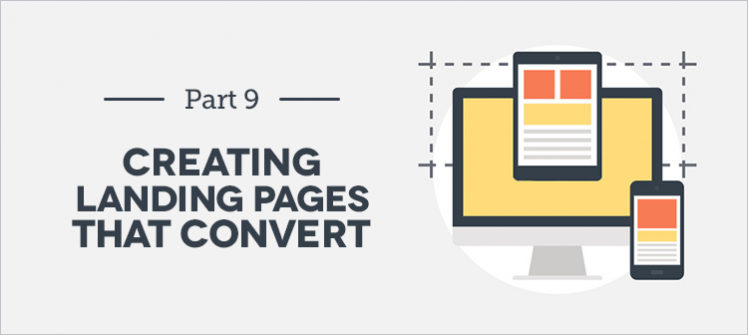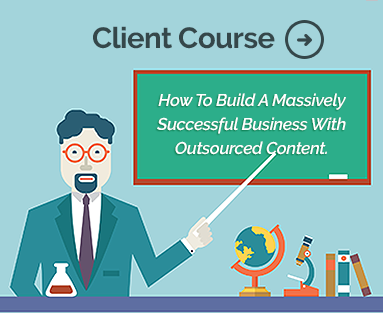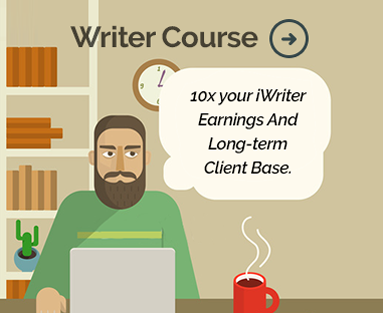Think about the last product you purchased online on a whim…meaning you had no intention of buying it until you saw an ad or a sales page that made you suddenly interested. Can you remember what that product was?
The reason I’m asking is because marketers have this “set in stone” idea of what a sales page should look like (also called a landing page, squeeze page, etc.). We see these pages so often that we can almost recite what the call to action will be before we even get to it. You know the type I’m talking about.

Now, don’t get me wrong here. Squeeze pages have proven to convert time and time again despite their “cheezy” appearance. So we’re not talking about if a page like that delivers results.
What I asked was- what’s the last product you impulsively bought online? Was it from a page like the one above or not?
Let me let you in on a little secret.
Ads like the one above convert on average 2-5% of the time. And if you’re driving 10,000 new visitors to your site daily, then that could mean 200 to 500 daily sales. That’s great money for an affiliate marketer and the approach makes complete sense in this one instance.
But for a regular, everyday business, those stats definitely work against you since almost 98% of your visitors are walking away empty handed. And if you’re focused on local website traffic only, then you’re going to run out of leads in a real hurry. Now let’s talk about the last product you impulse bought online…and it can be anything.
- A book or song from an online retailer
- A subscription to some type of service
- A physical item to use around the home
- A handy business tool (physical or digital)
- A cool tech gadget because it was…well, cool
If my stats above are accurate, then over 95% of you made your last purchase from a more conventional retailer that’s focused on building trust and relationships, likely on sites like Amazon, eBay, Apple and Wal-Mart.

So when we talk about building a landing page that converts, it is more important than ever to focus exclusively on your target demographic and your overall business model. Are you going for high traffic/low conversion rates from the entire world, or are you hyper-focused on excellent conversion rates with very specific type of customer?
Sadly, it’s one or the other…it is almost impossible do both at the same time. Or is it?

Take a look at this landing page on the Motorola Solutions website, which is this company’s enterprise branch for big business. As you can see, it has all the same elements as the sample squeeze page we introduced earlier. The only difference is that one uses video and the other uses the layout itself to generate a lead.
Yet, the Motorola page has a nice corporate feel to it, and it doesn’t look like your typical squeeze page either. But it does the exact same thing-
- It has an appealing title w/ strong imagery
- It has language that creates urgency
- It addresses a customer’s pain points
- It has a call to action
So here’s my recommendation- if you’re going to create a landing page to generate leads or sales, it shouldn’t look like a sales page at all.
Instead, I want you to focus on just one thing- creating a real connection (which is the beginning stages of trust).
You can use the exact same concepts and very similar terminology…you can even use the same types of images. But I want you to throw that squeeze page template you bought for $19 right out the window. Instead, worry about building a landing page that feels safe, welcoming and designed for the customer’s benefit.
Let’s compare the two ads above real quick

| Generic Landing Page | Corporate Landing Page | |
|---|---|---|
| Font choices | Loud, Urgent | Calm, Professional |
| Color Palette | Plain w/ bright CTA areas | Balanced in neutral tones |
| Call to Action | Long, several promises | Short, time sensitive |
| Access to Core Info | Watch a video | Read bullet points |
| Long-Term Benefit | No | Yes |
| Overall Feel | Generic, Pushy | Relaxed, Genuine |
The biggest difference between the two styles is that Motorola allows the offer itself to do the selling, while the generic ad tries to create hype in order to build interest. I want you to think about that for a moment.
If you find a great product online, is it necessary for the seller to “pitch you” over the course of a 10 minute video? Or would you rather discover the benefits on your own?
Now, there’s nothing wrong with having a process to sell complex, expensive, or new-to-the-market products, but it’s certainly not necessary if consumers can immediately see the value. And unfortunately, a large part of cyberspace doesn’t seem to understand that…because they’re selling the heck out of us on a daily basis.
So know this. Your job building a strong sales page is actually so much easier than you’d expect. You simply have to-
- Show value in your offer
- Gain the visitor’s trust
- Let the product sell itself
Or if it’s a product that requires a buyer’s journey, then the list would look like this-
- Show value in your offer
- Gain the visitor’s trust
- Qualify the lead (by phone, email, etc.)
- Provide information based on visitor’s needs
- Show how you meet the visitor’s specific pain points
- Close the deal (or let the product sell itself)
Again, this is in no way a knock on internet marketing.
That’s actually how I started in this industry and built my corporate brand with dozens of great products over the years. And it worked great for my ideal customer, but I was also in a very specific niche that’s allowed to break a lot of the conventional rules.
So remember; the focus is always on building trust and showing value. As long as your landing page has a clean look and you aren’t overselling, your conversion rates will continue to increase over time.


 Previous Lesson
Previous Lesson


